
This review may contain spoilers
"A lotus will only grow in the mud"
Kurosawa Akira made his directorial debut with Sanshiro Sugata in 1943. Set in the Meiji era, the story followed brash young fighter Sanshiro Sugata as he learned about judo and himself. Though the plot was quite simple, Sanshiro's journey from thoughtless bully to thoughtful fighter was appealing to watch. (The film lost seventeen minutes of footage after it was cut by the Japanese censors deemed some scenes not appropriate for wartime viewing.)Sanshiro comes to town in order to learn more about jiu-jitsu. He wanders into a dojo just in time to hear the members deciding to mete out punishment to a rival instructor who is teaching a new version of jiu-jitsu called judo. Sanshiro asks if it's an ambush. "Ambush? It's just a match without a referee." And one where the opponents greatly outnumber the unsuspecting teacher. Sanshiro watches in fascination as Sensei Yano throws the half-dozen men attacking him into the river. Sanshiro quickly changes his mind and decides to train in judo instead. Initially, the young fighter takes every opportunity in town to become involved in a fight to test his abilities. After Yano tells him he knows nothing about humanity and that teaching him would be like "putting a knife in a lunatic's hand", Sanshiro attempts to prove his loyalty and worth by spending the night in a mucky lotus pond. When a flower blooms from the mire, he gains a revelation about life and himself. Much of the rest of the film entails Sanshiro competing against other opponents on his path toward growth as a person and in judo. He develops feelings for an opponent's daughter which complicates matters when he has to face her father in a competition.
Whether or not they were realistic, the fights were engaging. Each match engendered personal progress in Sanshiro. The best fight was Yano's against the rival school's ambush. With a quiet confidence Yano defeated his foes in a humorous manner. The most emotional fight was Sanshiro's contest with Shimura Takashi's Murai, who had fallen away from his practice and was no match for the younger fighter. The older man was gracious and let Sanshiro know they were not enemies which stirred more self-improvement in the young man. The climactic clash against the film's villain, Higaki, reminded me of a samurai duel the way they circled and sized each other up. One man found enlightenment through a flower, the other used one as an ashtray. Without Yano's guidance Sanshiro might have ended up like the arrogant Higaki. The last confrontation was where it truly looked like a Kurosawa film with the wind bending the tall grasses and clouds racing across the sky.
This may not have been Kurosawa's most emotionally or narratively complex film but it had a compelling hero's journey as Sanshiro learned the spiritual aspects of his practice and in life. He grew as a man and as a fighter under the guidance of his wise sensei. Unlike so many of Kurosawa's later heroes who were forced into isolation during their emotional crucibles, Sanshiro remained devoted to his sensei and gained friends from former opponents. I found Sanshiro Sugata to be an entertaining film, even in its shortened version.
8/11/23
Edit: I read there is a DVD version available that was able to include the missing minutes.
Was this review helpful to you?
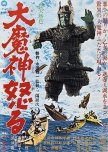
This review may contain spoilers
"Such foolish things don't happen" Wanna bet?
Return of Daimajin is the second in a series about the title character, only this time he lives on an island in the midst of a lake shared by two peaceful clans instead of on a mountain. Trouble begins brewing and bubbling when an evil warlord decides to use the two clans' festival for the god to overthrow their castles.Danjo of Mikoshiba enslaves his people and kills those who try to escape. Some refugees make it out through the mountains and find a haven with the kind Chigusa and Nagoshi clans who live on opposite sides of Lake Yagumo. During the festival to celebrate the lake god, Danjo and his men take advantage and overthrow both clans, killing the lords and taking one of the sons hostage. The blasphemous Danjo sends his men to destroy the god's statue on the island with explosives. The other lord's son, Juro, escapes and flees to the island where his love, Lady Sayuri is also hiding, having miraculously survived the explosion and destruction of the statue.
Later, the hostage Katsushige is freed when a local boy helps him. He heads to the island as Juro is escaping Danjo's forces and both are captured because neither one can row a boat fast enough even when they had a head start. The two heirs, people who helped them, and Sayuri are set to be executed. Will Sayuri's tears be enough to sway the lake god? If the god of stone has one soft spot, it's a beautiful woman's tears and he rapidly parted the waters, destroyed his island with the baddies on it and began tearing down the defensive walls in order to wreak havoc on Danjo and his band of evil doers. I particularly liked how Danjo died the same way he had planned for Sayuri.
This movie was entertaining as I've grown fond of the big green faced guy, but I didn't find the story and characters as compelling as the first one. The overlays weren't as seamless as the first and third movies, some scenes rather obviously spliced together. Daimajin was faced with a couple of new obstacles which didn't even slow him down, but it was fun watching the evil doers try. Daimajin looking over with a "Really?" expression on his face was humorous. Because much of the action took place on or near the water Daimajin had some fancy water tricks up his sleeve along with his usual storms, landslides, and earthquakes. Though numerous bad guys died, the body count seemed less than the other two films, at least no children were killed.
Once again, the scoffers and cruel overlord were brought to a rough justice. The people who were respectful and peaceful were rewarded after suffering and trying (and failing) to save themselves. I have enjoyed this series of films blending samurai and Kaiju. The sets, story and acting were better than average for this time period of monster movies. Return of Daimajin was entertaining and one worth trying if you like old kaiju films.
7/24/23
Was this review helpful to you?
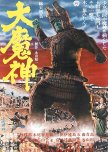
This review may contain spoilers
Honey, this guy doesn't use doors!
Daimajin was the first in three movies about the mercurial mountain god which were filmed roughly around the same time. As someone who enjoys a good Kaiju movie I found this one to be entertaining. Unlike other Kaiju who either came into town to stir up trouble or fight other Kaiju, this stone warrior had his own code. An evil lord found out the hard way that you do not want to attract Daimajin's attention for wrong doing!The movie begins with the villagers ruled by the Hanabusa clan participating in their ritual to the local mountain god. The treacherous samurai Samanosuke uses the opportunity to stage a coup. Everyone in the ruling family is killed except for the young son, Tadafumi and his sister Kozasa, who are spirited away by the loyal retainer, Kogenta. Kogenta seeks help from the priestess, Shinobu who takes them to the forbidden mountain and hides them in the cave next to the Majin statue.
Ten years later finds the people pressed into forced labor building Samanosuke's great gate. Villagers are starving and dying under his cruel rule. Now eighteen, Tadafumi decides it's time to return and kill Samanosuke if it will help the people. Kogenta goes ahead to the camp in order to contact people loyal to the Hanabusa family in the hopes of gaining more support for a rebellion but is taken prisoner and tortured instead. Tadafumi attempts to rescue him and is captured, too. The son of one of Hanabusa's loyal subjects runs to the priestess to ask the Majin for help. He finds the princess but the two of them are captured by Samanosuke's men on the mountain. When the samurais attempt to destroy the Majin statue the mountain destroys them. Kogenta and Tadafumi are scheduled to be executed at dawn causing Kozasa to beg the mountain god for help even if he requires her life in exchange. Daimajin awakens and unleashes his terrible fury on the evil doers.
This film played out as more of a samurai movie for most of the running time. Daimajin waited until after the 60-minute mark to make his appearance. Fortunately, the acting was pretty good, especially for this genre and the story was compelling. Daimajin made for a fierce and frightening avenger, especially when it seemed he would rampage on the victims of Samanosuke's ruthlessness after he finished dispatching the bad guys. Because he wasn't over 300 feet tall, his presence could be seen in relation to the people in a more immediate way. In a bit of karmic irony, Samanosuke died in a manner similar to the crucifixion execution he was using on the heroes, and in the manner his vassals used to try and destroy the statue, which of course released Daimajin. Bad guy should have listened to the old priestess, she tried to warn him!
The mountain scenery was beautiful and blended well with the miniatures and special effects when the samurai transgressed on the sacred ground. A few of Samanosuke's buildings came across as flimsy, but the better for Daimajin to tear down as he stomped his way to vengeance. When Samanosuke closed the door to the building he hoped to hide in, it was humorous, because doors had no effect on the giant stone warrior, nor did fire, bullets, or giant chains. The only thing that had an effect on him were the tears of a pure-hearted woman.
As a long time Kaiju fan, I have been pleasantly surprised by the quality of this series of movies. I accidentally watched the last one first, but as they are not tied together it didn't affect understanding the story. The acting, sets, and storytelling have been strong for the genre. Most 1960's Kaiju movies would not have stood up to waiting an hour for the monster to appear. The giant stone warrior in this film was just a bonus to the already entertaining story. By this time Toho was marketing Godzilla to a younger audience. With the deaths and torture scenes, Daimajin could appeal to adults as well. If you enjoy old Kaiju and samurai movies, this is one to give a try.
7/23/23
Was this review helpful to you?
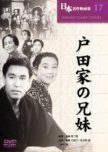
Brothers and Sisters of the Toda Family
1 people found this review helpful
This review may contain spoilers
"Everyone has a weakness. Even a hero."
During WWII and after Ozu's first military tour he filmed The Brothers and Sisters of the Toda Family. Ozu ran afoul of censors concerned that he didn't mention the war in a wartime film, but his emphasis on filial piety and the need to take care of aged parents smoothed things over. His biggest concession was sending the youngest son to China to work in the land of opportunity. Pretty sure the Chinese did not think of the Japanese in their homeland the same way but I will try to look at the merits of the film aside from that disconcerting historical context.The Toda patriarch suddenly dies in his mansion after a big family birthday party. The adult children are shocked to discover that the wealthy businessman was nearly bankrupt. After everything but a worthless villa near the ocean is sold off to pay his debt, the mother and youngest daughter, Setsuko, are left homeless. The eldest son takes responsibility allowing the two women, plus the old family maid, to come live with his family. The youngest son, Shojiro, decides to seek his fortune and prove to his father that he is capable and scurries off to China to make his fortune. The eldest son's wife treats his mother and sister like unwelcome guests no matter how unobtrusive they try to be.
On they move to the eldest daughter's house. She immediately bristles because her son loves his grandmother so much that she feels she will lose authority in the house. When Setsuko wants to find a job as she and her mother are penniless, the family puts their foot down. They would be embarrassed for her to be a clerk. More embarrassed than their father bankrupting himself? Mother, daughter, and devoted servant end up finding shelter in the deteriorating villa.
For the one-year anniversary of the patriarch's death, Shojiro makes his way home. At a formal remembrance dinner, he calls the family out on the carpet for treating their mother so shabbily, leaving no one unscathed. "Children should be kind and warm to their mother…You talk without doing anything." The chastised family members abandon the expensive dinner with only the small trio and son left in the room to enjoy the meal in peace. Shojiro believes the truth-filled disruption may bring more harmony and better siblings in the future. Though the women seem to be happy living by the sea, Shojiro insists they come to live in China with him. Given the times, they had little choice but to pack their bags again, at least Shojiro wanted them to be near him.
Ozu had asked for more money to film this movie. The studio responded by giving him less time to film and wanting to see the finished project before increasing his salary. The Toda Family went on to be quite successful partly because of Ozu's skill but also because of the famous stars Saburi Shin as the youngest son Shojiro and Takamine Mieko as the youngest daughter Setsuko. Ozu had largely solidified his style for this film---the low angle shots, meticulously composed frames, lingering shots over geometric rooms and objects (often the father's plants and bird), and more of face straight on to camera shots. Ozu was more concerned with story than acting, and felt that excessive drama was not needed for an audience to be emotionally touched, a method he sought to convey here.
As he would with other films, the disintegration of the family and traditional values were beginning to show. And as in Tokyo Story, a parent was treated as an inconvenience. After recently watching Kurosawa's Ran (based on King Lear), I was reminded of Hidetora finding no welcome mat rolled out by two of his sons when he was homeless. Shojiro, like Saburo, became the prodigal son who lovingly welcomed the parent, albeit with a happier ending.
The film reflected Ozu's life in some ways. After his father's death he took both his mother and a younger brother in. At the end of the film, a bashful Shojiro literally ran away to hide at the beach before a matchmaking date. "Everyone has a weakness. Even a hero." Ozu was a lifelong bachelor who lived with his mother until she died. A parent's aloneness after a death or a child marrying often played into his stories.
Ozu also tackled class distinctions. When Setsuko and her friend Tokiko met for lunch, Setsuko discussed wanting to find a job. Tokiko informed her that taking orders is much different from giving orders and would be difficult for someone who had never been exposed to that way of life. Shojiro told Setsuko that in China no one would look down upon her for working or doing whatever she wanted. The privileged upper class was seen in lower regard, especially in the disregard they had for the elderly and servants and traditional values.
After watching a number of Ozu's silent films which portrayed a looser filming style it was interesting to see that famous Ozu formula begin to firmly coalesce in the The Brothers and Sisters of the Toda Family. Despite being over 80 years old the film remains timely. Children still argue over who is going to take care of an aging parent. People still focus on their own lives forgetting there are others in need of love, acceptance, and something as basic as shelter. Thankfully, there also people who will open their hearts and homes to those in need, especially for a beloved parent. The lack of color did not take away from the beauty of Ozu's meditative and architectural shots, he always knew how to use light and shadow to his advantage. A timely story, well-acted, and skillfully filmed made for an entertaining film.
7/20/23
Was this review helpful to you?
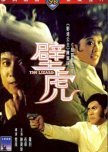
Back to The Lizard. Yueh Hua played the titular role AKA Cheng Long/Brother Dumb. Cheng Long was a stuttering and bumbling police officer by day and a skilled martial artist and jewel thief who robbed wealthy foreigners by night always leaving behind a lizard calling card. Connie's Xiao Ju was close friends with the bumbler and an admirer of the masked hero. Lo Lieh played the corrupt Chief Chen who used his position to fleece the locals at his rigged casino and make connections with the wealthy foreigners. The Lizard runs afoul of Chen and the game is on, with the odds against the Robin Hood of the people.
A few years prior, Connie might well have played the Lizard, but Hong Kong martial arts movies were headed in a decidedly more machismo and bloodier direction by 1972, mostly leaving behind the glorious heroines of the 1960's. Connie, Josephine Siao and Cheng Pei Pei could probably have compared notes. Yueh Hua wasn't as stone-faced as he appeared in many of his martial arts roles, but still wasn't particularly convincing as the burglar who could climb walls like a lizard. Jewel thieves, historically, are played by charismatic actors, something Yueh was missing. Lo Lieh who had often portrayed good guys before Lizard was to play one of his early villain roles, something he would be typecast as for much of the rest of his career. Dapper and sinister in his white suit, maybe he and Yueh should have swapped roles, he would have made for an entertaining jewel thief. Chen's army of casino thugs boasted many familiar stunt men who were fun to pick out, including Yuen Woo Ping.
Yuen Woo Ping was the martial arts director along with Yuen Cheung Yan. Woo Ping would go on to work as a director, action director, and/or martial arts director for movies far more famous than this one, i.e., Crouching Tiger, Hidden Dragon and Kung Fu Hustle. The action scenes for the most part were well choreographed, especially for actors with limited martial arts abilities. The stunt men worked overtime flying high and falling hard to sell the action. The sets were opulent, showing off the wealth of the corrupt officials and foreign occupants. But fear not, there were still tear away sets for the characters who would rather crash through a door than open it and windows that gave way when the bodies started flying.
The movie tried to sell comedy along with the action, missing more than they hit. They needed organic comedy rather than Lydia Shum crossing her eyes in several scenes for laughs. Not only was there comedy but there was also pathos as a couple of loveable supporting characters did not live to see the closing credits. Fair warning, there was gratuitous nudity in the opening scene, a sex scene that seemed to go on forever featuring an overly made-up blonde woman.
I suppose I wrote more about the cast and crew than the story because the film should have been better and more exciting. The Lizard could have been a stylish and taut thriller if so many opportunities hadn't been missed. Too often, the momentum stalled and the story lumbered along. Connie may not have been the most skilled fighter, but she added enthusiasm to every scene she was in which were far too few. The Lizard wasn't a bad 1972 kung fu movie, and certainly was one of the most beautiful SB films in terms of aesthetics, somehow, I just didn't find it enthralling even though I desperately wanted to. Having said that, for old kung fu movie enthusiasts, I could easily recommend giving this one a try, especially if for some of us, it's the only chance to watch The Movie Fan Princess (1966) in action.
7/19/23
Was this review helpful to you?

This review may contain spoilers
"From now on you live by violence"
Bandits, Prostitutes, and Silver was a dark kung fu film from Taiwan. No secret lists, no secret books, no Ming rebels, only bandits, prostitutes, and silver, just like the title reads. You could throw in death and dismemberment as well to be more accurate.Shang Li is a carriage driver who is trying to earn enough money to buy freedom for Xiao Chui, the prostitute he has fallen in love with. Earning money the honest way is going to take at least nine more years and there are other interested buyers. He agrees to help the Sparrow, a notorious thief, steal a chest full of silver being transported by another carriage. When Sparrow tells him they have to kill the driver and the official inside, Shang Li balks, refusing to murder innocent people. He and Sparrow end up fighting with Sparrow being killed with his own daggers. The road to Xiao Chui is not easy though because The Red Scar Gang boasting Angela Mao and Phillip Ko Fei are hiding in the bushes waiting to ambush the silver. They are working with Wang Hsieh's Wu and Big Bad Lo Lieh as the corrupt official Pao. When these bad guys start turning on each other the fighting gets interesting. Shang Li tragically learns that crime doesn't pay, nor does it lead to true love.
The fight choreography was above average for the time. Don Wong moved pretty well and the stunt men made sure there were bodies flying everywhere. Wire-fu and reverse photography were used sparingly. The body count was high though the blood was kept to a minimum. There were goofy weapons as these films often have. Angela's character had spinning saw blades on her shoes. Lo Lieh used chains with cuffs on them that could decapitate a person. Wen Chiang Long's Sparrow shot darts out of his wrist bands. Phillip Ko didn't need weapons, he always made a kung fu battle fun even when he was being beaten. Wang Hsieh usually relied on gimmicky weapons or skills, this time he only had stress balls to futilely throw in battle. The charismatic villains improved the quality of the fights and movie greatly. For around the last 40 minutes of the film, the fighting began in earnest as baddie after baddie betrayed each other leading to death. Is there no honor among thieves?
Kao Pao Shu, a rare female director and writer for this genre worked with prolific writer Ni Kuang on the script, giving Bandits, Prostitutes, and Silver more character depth than these films usually have. In many ways this was a morality tale. Shang Li started out as a good guy, although looking for true love in a brothel might not have been the wisest course of action. When desperation drove him to crime, Sparrow was right, "From now on you live by violence." It didn't matter that he tried to minimize the theft and murders, Karma was not going to allow him the desires of his heart, only pain and death awaited him for his transgression. This kung fu film didn't back down from the tragic trajectory it set for the characters as each one paid for their betrayals with retribution coming as quickly as silver coins can fall out of a pocket. As always, I rate these old niche films on a curve, and like most old Taiwanese kung fu films, only fans of the genre may appreciate it.
7/17/23
Was this review helpful to you?

This review may contain spoilers
Always check the weather report before an assassination
When you put the word "legendary" in your title, there is a lot to live up to. Legendary? This film won't even be memorable. Jacky Wu starred in and directed Legendary Assassin and managed to tick off the boxes for a triad martial arts movie without adding anything new or interesting to the genre. While that could be excused if the fights were…wait for it…legendary, sadly they weren't. Most of the fights were average or below average at best.Bo (Wu) takes a ferry to an island where he assassinates a drug lord and decapitates him. A possible typhoon strands him on the island and he has to lay low. If only there were news programs that had weathermen who could forecast such events. Bo's not worried, especially after he has a meet cute with the local policewoman, Hiu Wor (Celina Jade in her first movie role and it showed), and later saves her when Ken Lo and his two thieving buddies resist arrest. Ronald Cheng briefly offers some comic relief as Uncle G, the noodle shop owner. Bo goes to the police station with Hiu Wor to make a statement and enjoys a meal and camaraderie with the local force, with the exception of Tarzan-Sammy Leung-who hugely overacts. Bo and Hiu Wor have a little kung fu flirting before she's called to work. Meanwhile, Lam Suet and a bunch of baddies who landed the last boat on the island are searching for their boss' head and the person who took it. The movie follows a predictable path from there with Bo eventually having to fight 100 men to save Hiu Wor.
The problem I had with the film was that the writing, characters and acting were so bland that I didn't care about any of the characters. What should have been a tension filled and claustrophobic cat and mouse chase with the bad guys searching for the assassin was anything but. Even when the baddies crashed the police station demanding their boss' body, the fights and acting were so bad that the characters' dilemma failed to concern me. If they didn't care enough to even attempt first aid on an injured officer, why should I care?
By 2008 there were numerous martial arts movies using creative and exciting fight choreography. By reputation, Wu was an accomplished martial artist, but even the most skilled fighter still needs exhilarating choreography to keep up with the genre. Bo went up against 100 men but Wu used the same kick on at least 50 of them with the action either too slow, too sped up, or shot too close. The only fight that was entertaining was early on in the movie at the noodle shop. By the time the dead drug lord's wife started swinging a sword around near the end of the movie my eyes had nearly rolled back in their sockets at the cringe worthy acting and action.
I rate 1970's cheap martial arts movies on a curve, but even though this film was made during the time of the Nokia brick it gets no such consideration from me. I don't mind a by the numbers story if the fights are spectacular, but Legendary Assassin failed to deliver in that department, leaving this viewer with a pile of uninspired characters, uninspired acting, and uninspired fights. I found this movie to be legendarily mediocre at best.
7/14/23
Was this review helpful to you?
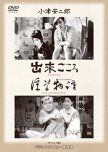
This review may contain spoilers
"Everyone yearns for love"
Before Director Ozu focused on upper-middle class families and father-daughter relationships, he evaluated the working class in this film. In Passing Fancy, the focal relationship was between a flawed father and son who could wind each other up but could also show incredible affection for each other.Kihachi is a widowed father who works in a brewery with his younger buddy, Jiro. After attending a book reading with a shamisen accompanying (Naniwabushi), the two men stumble across a young woman with no family and no job. Jiro votes to leave her behind, but Kihachi asks the local café owner, Otome, to take her in. Kihachi becomes quickly smitten with Harue, however, she sees him only as a kindly uncle. Jiro tends to be a jerk when he's around her and begins to avoid the café. Tomio doesn't approve of his dad's attention for Harue either. When Tomio is taunted about his dad's illiteracy and penchant for drinking after work, Kihachi tosses him 50 sen and tells him to buy whatever he wants, hoping the boy can feel rich for a day. Tomio uses the money to buy sweets and fruit and becomes deathly ill. In order to pay the doctor bill Jiro asks the local barber for a loan. To pay back such a large sum the young man plans to go to Hokkaido where laborers are being hired. He and Harue confess their feelings for each other and say their good-byes. When Kihachi discovers his plan he knocks Jiro out, leaves Tomio in his neighbors' care and heads to the boat. Kihachi must decide whether his pride or his love for his son will win out.
The story was sparse, but feelings ran deep. Kihachi realized his shortcomings as a father but desperately loved his son. Even though Tomio was at times embarrassed by his dad, he was devoted to him. Although Kihachi was infatuated with Harue he was willing to play matchmaker for her and Jiro. Jiro loved Harue, but cared for his friend and for most of the film stayed away from the young woman out of respect for Kihachi. Harue felt indebted to Kihachi but loved Jiro. Otome might have had feelings for Kihachi, but even though they were about the same age, typically, he only had eyes for someone half his age. At times the relationships felt more like a love circle or a spirograph than any other geometrical description. In later Ozu films, the nuclear family was the beginning and end of problems and problem solving, but in this film, the family is a made family. The friends and neighbors genuinely believed it was their responsibility to help each other. Rather than a nuclear family, the community was the emotional core of Passing Fancy. That's not to say there wasn't humor, it ran the gamut from an antic about a wallet at the reading, to Tomio waking his father and Jiro with a thick stick and Tomio striking childish movie poses. But even when the story turned slightly darker with Tomio berating his father and being cuffed on the head, the emotional catharsis that followed granted father and son exactly what they needed.
Before his rigid shots and perfectly formed compositions, Ozu used a more fluid style. Though he utilized lower camera angles, the characters were shown more full body than the later static shoulders and above style. The rooms were messier and more lived in. Sakamoto Takeshi (Kihachi) and Tomio Aoki (Tomio) would work together the next year on Ozu's Floating Weeds. As he did in Weeds, Sakamoto constantly wiped himself off and often sat his handkerchief on his head. Both he and Tomio scratched in most scenes, much in the way men do when women aren't present. Unlike the impeccably dressed characters of his later films, these men wore scruffier clothes and Tomio was usually dirty. Fathers in his later films were more respectable, giving more forethought to their actions. Kihachi had never seen a reason to try and save money until Tomio fell deathly ill and did little planning. Poor Tomio, children in old Japanese and Chinese films often ended up at death's door over a piece of cake or sweets of some sort.
Neither father nor son were perfect which is what made this film so enjoyable. They fought, they made up, they dealt with crises, and found a way back to each other. Neighbors took care of one another and love found a way. Passing Fancy may have been short on story but was no passing flame, it had great heart and staying power.
7/12/23
Was this review helpful to you?
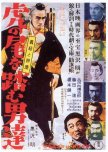
This review may contain spoilers
"The road ahead is more important"
Kurosawa filmed The Men Who Tread on the Tiger's Tail in 1945 but due to Japanese and American censors the film wasn't released until 1952. Based on a Kabuki play which was based on a Noh play which was based on a famous legendary event in 1185, the film retained the look and feel of a play. The event involved a famous samurai and his six loyal retainers attempting to seek refuge far away from his murderously paranoid brother.The story retells the tale of Yoshitsune who helped his brother defeat his enemies and become Shogun. Despite all his help, Yoritomo, like any loving brother would, decided Yoshitsune was a threat and ordered his "capture". Yoshitsune escapes with six loyal retainers, including the fierce monk samurai Benkei. As they travel through the woods dressed as monks, the audience is treated to a chatty, unhinged porter who informs them that the check point guards are looking for samurai disguised as monks. Some unlucky monks were cut down recently at the checkpoint---so much for capture being the goal. Yoshitsune disguises himself as a porter, but having never carried his own equipment, is shaky with handling the load. When they arrive at the barrier, Benkei works for their release by appealing to the magistrate, Togashi. Eventually, after several close calls, Togashi allows them to pass. As long as you don't read the next chapter in history, it's a happy ending!
One of the reasons that the Japanese failed to list Kurosawa's film officially, which caused the occupying forces to ban it, was that certain censors felt like Kurosawa had treated the revered samurai too lightheartedly, especially with the addition of the comical porter. The porter who mugged for the camera when he wasn't bouncing around was annoying. He was a prescient combination of the jester in Ran and Mifune Toshiro's deranged samurai in Seven Samurai/Rashomon. Whether he was comic relief or an avatar for the audience, I could have used less of him onscreen.
The main character in this film was not Yoshitsune, but rather Benkei, at least when the porter wasn't laughing maniacally and stealing focus. The monk did most of the planning and when confronted with the opposing forces at the border pleaded their case to Togashi. This included a 3 ½-minute reading of a Buddhist "proclamation" which felt twice that long. When Togashi sent the "monks" food and drink afterwards as an apology, there was an 8-minute drinking, dancing, singing segment. There were several singing segments, the film was much like a musical play.
Aside from Benkei, Togashi was the other compelling character. The way he was played it appeared he knew the monks were Yoshitsune and his men and purposefully let them go much to the consternation of his underling. When he sent the drinks, which Benkei took very seriously and ceremoniously, it caused me to wonder if Togashi would have to forfeit his life when it was discovered Yoshitsune had eluded him and Benkei was aware of that sacrifice as well.
As I mentioned, the film felt theatrical and simple. Maybe Kurosawa was filming on a wartime budget which might have accounted for the short running time. There were very few settings, only indoor sets with painted backdrops and fake trees. With the exception of opening fog, his signature wind was missing. Unlike Kurosawa's wider shots from later films with action going on in three layers, most shots were narrowly focused in small frames. This film felt lacking in energy and urgency, especially for men on the run with the enemy lurking about. Instead of his fluid shots with action carrying the story forward, even if it was just the weather giving movement, much of this film showed men squatting or manspreading or simply standing around. For a Kurosawa film it felt strangely static.
As a brief lesson in Japanese history, it was interesting to learn a little bit about this famous samurai. What came after this story was even more fascinating to me. A few years later, to give his lord time to commit seppuku when they were betrayed and surrounded, Benkei guarded the way in, taking so many arrows he died standing up. Such was the nature of his reputation that the opposing side waited before checking to see if he was alive. While most foreign audiences wouldn't have known this story didn't ultimately have a happy ending, reading more about it did give what appeared on stage more depth to me.
I found the porter grating instead of humorous, although in the end he did show his loyalty and use. Benkei proved to be fast on his feet when it came to crossing words with the enemy. And the enemy turned out to understand that murdering one's own brother might not be the best way to instill trust in people. The Men Who Tread on the Tiger's Tail was fairly entertaining and a nostalgic look back at Kurosawa's fourth film. How well you enjoy it may depend on how well you enjoy the porter's antics and dialogue interspersed with song.
7/10/23
Was this review helpful to you?
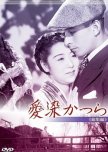
This review may contain spoilers
Use your words!
Aizen Katsura AKA The Tree of Love was a melodramatic love story with a plentitude of nice people who excelled at communication except for the two people who mattered most. But how else to keep two pleasant people apart except with timeworn misunderstandings and lack of communication? Katsue and Kozo would test the Tree of Love's blessing and patience to find out if it was strong enough to grant them everlasting happiness.Gentle Katsue earns a living as a nurse supporting her daughter as well as her older sister. The problem being, that nurses have to live in the dormitory and are expected to be virgins---no married women! When Katsue is caught in the park with her daughter a fellow nurse convenes a late-night accusation party. After Katsue explains she's been a widow since she was eight months pregnant and had been forced to marry at eighteen, her fellow nurses declared solidarity with her. The hospital owner's son returns after his medical training and promptly falls for Katsue when she sings at his party. They begin seeing each other and Kozo makes what amounts to his declaration at the Tree of Love. His father has arranged a marriage with Michiko, an American educated young woman, whose father is also a doctor, a plan Kozo rejects. When he decides to travel to Kyoto so that he and Katsue can be together she agrees. Unfortunately, her daughter falls ill and she doesn't make the train. Kozo assumes the worst, that she's dumped him and doesn't contact her again. From there it's a series of more misunderstandings and near misses.
The romance in Tree of Love was pretty thin even though it was a popular movie in its time. As many films from this period did, it highlighted the plight of single women and single mothers. Few jobs were available to women, much less married women. Aside from having to work to survive, as a young widow, Katsue wasn't going to be most parents' first or tenth choice for a child's spouse. One of my favorite aspects of this story was the generous support of Katsue's fellow nurses. Not a jealous, spiteful woman in the lot. From beginning to end, they had her back which I found delightful as positive women's friendships tend to be scarce. Even Michiko, the possible fiancée, was understanding and kind, looking out for Kozo's best interests even if she didn't end up as his wife.
Tanaka Kinuyo was lovely as the gentle Katsue believably portraying a nurse and caring mother, a genuinely likeable heroine. Uehara Ken had little to do but sit around looking dashing, which he did well and Kozo was never cruel to Katsue even with the misunderstandings. Though it was billed as a melodrama, with people this beautiful and amiable, supported by Katsue's cheerleading squad of friends, this sweet couple didn't need a Tree of Love, more like a Tree of How to Use Your Words. If you enjoy older movies, Aizen Katsura is not a bad way to spend 90 minutes.
7/4/23
Was this review helpful to you?
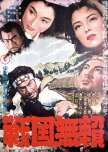
This review may contain spoilers
"Some swords are useless no matter how you polish them"
Sword for Hire AKA Vagabonds in a Country at War told the tale of three samurai who survived the destruction of their castle and where they ended up afterwards. Two intersecting love triangles formed with one man at the point complicated matters between the former allies. It is important to note that the surviving print is missing 30 minutes, so while you may see running times of 2 hours 15 minutes listed, at present, the film is only 1 hour and 45 minutes long. It is also badly faded and degraded making some scenes difficult to see.Mifune Toshiro as Hakate, Mikuni Rentaro as Jurota/Jurata, and Ichikawa Danshiro III as Yaheiji are facing imminent death when opposing forces are set to overrun their castle. Jurota abandons the fight taking Hakate's love, Kano, with him as cover. Hakate escapes during the fighting even though he is badly wounded. Yaheiji is captured but is able to overpower his captor and also escapes. Jurota joins another army hoping to make a name for himself. Hakate is rescued by the female bandit Oryo and nursed back to health. Yaheiji becomes the leader of another band of bandits. Hakate once more is on the run when it looks like he killed Oryo's father. He joins a competing army to Jurota's. Put that all in a blender and the characters start mixing, and falling in love, and just missing each other or running into one another. It becomes a complicated mess of human emotions.
Sword for Hire was entertaining but came across as a low budget samurai movie. The sets made the scale of the film quite small. Kurosawa Akira was credited as one of the writers, but there seems to be some debate as to how much he contributed.
Of all the characters, I was at first intrigued by Shirley Yamaguchi's Oryo. She was fierce and flamboyant but quickly devolved into the stereotypical obsessive and hysterical female character from this time period. Asaji Shinobu's Kano was the typical cardboard female character who could have been played by anyone. I enjoyed seeing Shimura Takashi as an inn/restaurant owner who gave completely ignored advice and snippets of wisdom to Jurota. When you could make him out through the foggy weather and foggy film, Mifune Toshiro looked sublime. Ichikawa made for a rough and tumble "rock" with a heart of gold. Mikuni was relegated to the braggart and self-serving character of Jurota, the "useless sword" Shimura's character spoke of.
I'm not sure where the missing minutes were from as there was a proper beginning, middle, and ending to the film. The story didn't feel strong enough to add 30 more minutes of flabby middle to it, or perhaps it would have enthralled me. Maybe the added scenes would have filled out the love triangles/pentagram/hexagram (these rotating couples are beyond my geometric skills) that ultimately seemed pointless in this version as the women only had eyes for Hakate. There wasn't enough fighting for a good civil war film or enough loving for a romance which left this Sword for Hire without a buyer.
7/3/23
Was this review helpful to you?
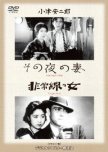
This review may contain spoilers
How far will a father go to save his child?
That Night's Wife was an early Ozu crime film that still managed to focus on a family as many of his later films would. The three main characters all found themselves facing moral dilemmas and acting out of character, at least briefly, all for the sake of sick child.Shuji is a father driven to desperation one night because his child is dangerously sick and he needs money for her treatment. He robs an office and is at once chased by the police. Thinking he has found safety in a taxi, unbeknownst to Shuji, it turns out the driver is an undercover police officer named Detective Kagawa. Once home, Shuji explains what he's done to his wife, Mayumi, who is not pleased. Kagawa comes knocking at the door, not taking no for an answer. Shuji helplessly hides behind a curtain, as Kagawa begins to search the small apartment. Mayumi pulls the gun used in the robbery on Kagawa and tells him that no one is going anywhere until her daughter is better. During an uncomfortable night, the detective sees their poverty and utter devotion to their daughter. The next morning, the doctor arrives and declares little Michiko on the mend. Kagawa feigns sleep and Shuji seems to be making an escape, but when Kagawa opens the door, the sober headed father has returned. Shuji wants to serve his time as he should so that he can be a father his daughter would be proud of.
Ozu wasn't afraid to be critical of the societal structure that left many without and parents faced with dire decisions to safeguard their children. As other authors would ask, should a person go to jail for stealing bread to feed his child? What lengths would a person go to, to save his child when society deemed her unworthy of saving? Shuji, the devoted, loving father, acted out of character by robbing people at gun point. Mayumi, the traditional, gentle wife, acted out of character by pulling a gun and basically holding Kagawa hostage. Kagawa, the hard-boiled by the book cop, acted out of character by agreeing to stay until Michiko improved and by pretending to be asleep in order for Shuji to escape. In the end, Kagawa walked arm in arm with Shuji to the police station giving the viewer hope that the father's sentence would be a compassionate one. Wh
The apartment where much of the story took place was very un-Ozu-like. Instead of the precisely ordered and decorated spaces he was known for, this apartment was cluttered with American movie posters hanging on the walls, paint cans piled up, laundry looped over a line in the living room, and everything pretty much askew. There were some classic noir shots, silhouettes against a glass door, close-ups of a gun, and shadowy, heart pounding chases through darkened streets with only the white police gloves or shiny sabers breaking the inky night. Instead of just the head and shoulders shown of the characters, often he showed the full length of the bodies as they moved naturally about. As opposed to the later slow orderly action of characters, Shuji hid and ran precariously through the streets, even crouching down in a phone booth to call the doctor, nervous and sweating. I found it honest and refreshing.
Something else I found refreshing was that this time it was the father who did something amoral to protect his child. In much of these 1930's films, women paid a terrible price by committing acts of prostitution to save their children. Mayumi was now alone and vulnerable, with few options for making money, hopefully, this character found her way to survive until her husband returned home. The film may not have looked like an Ozu film, but even in a crime noir, the heart of the story was the relationship of a husband and wife and their love for their daughter. Each of the characters had to weigh their moral decisions against the weight of an unsympathetic society, surprising themselves at times, but ultimately remaining true to their honorable selves. Not a must-see silent film, but an entertaining one that reflected Ozu's view of his world.
6/29/23
Was this review helpful to you?
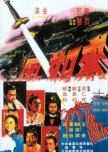
This review may contain spoilers
Not everyone is as they seem...
The Swift Knight was an engaging wuxia starring Lo Lieh, Chin Han, and Margaret Hsing Hui. Most of the main characters were shrouded in secrecy and none were who they appeared to be. Two lost royal heirs drew everyone to them like a magnet, those who wanted to save them and those who wanted kill them. They only had to gamble with their lives to figure out who was on their side.Lo Lieh played the titular character, the Swift Knight. He robbed from the rich and sometimes the suave vagabond gave to the poor. While at a brothel one night the virginal Xian Qin caught his eye, inducing him to offer a down payment, promising to come back with the rest of the money that night. Chin Han, dressed as a beggar, also sought to take Xian Qin away from the brothel, though without paying. Perennial bad guy Wang Hsieh, who had more costume changes than a beauty pageant contestant was after the young woman, too. He wanted to take her away from the brothel—to execute her. The rest of the story involved a number of sword fights and horse chases all in lieu of seeing who would end up with the lass and her younger brother.
The story of political intrigue and secret identities was a familiar formula but entertaining nonetheless. Lo Lieh had the perfect charisma to play the shady Robin Hood. If I have one complaint about the movie it's that Lo wasn't used enough and he's such a dynamic actor that he makes even small scenes seem bigger. Chin Han gave a rather one note performance as the beggar hiding an honorable identity. Fan Mei Sheng as the constable who knew too much and was on the run with the little group provided levity without sliding into slapstick territory. Margaret Hsing Hui didn't give the greatest performance but was able to convey her character's reticence about living a royal life, especially after she had fallen in love with the Swift Knight. Wang Hsieh never met scenery he didn't want to chew and made for the perfect villainous foil for the good guys.
This was one of those rare Shaw Brothers movies which showed the care and forethought that was put into the script and settings. For a low budget martial arts movie, it had a scenic depth to it and didn't look like it was shot on a small sound lot. Flashbacks were bathed in vibrant blue or red. Well-developed characters made for a compelling story. In a martial arts film, complex characters you can care about give the fights higher stakes. Lau Kar Wing and Chan Chuen choreographed several fluid fights with plenty of dismembered arms and blood, though not the artery spewing type that would become popular in a few years. Most of the action was sword fighting although the baddies as always used some sinister weapons in addition to swords. Because it was a wuxia there was classic light body leaping. Instead of the old school filming in reverse, the wire work used was smooth and graceful, no flailing of arms, and happily I couldn't see the wires.
Director Cheng Chang Ho pushed the envelope for a SB film and gave it a hint of artistic flare, something often missing from this low budget genre. He even gifted the audience with a proper ending instead of the oft used freeze frame in mid-scene during the final fight! The Swift Knight had interesting characters, an intriguing story, and entertaining fights. For a fan of 1970's martial arts movies, what else could you ask for?
6/26/23
Was this review helpful to you?
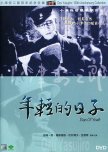
This review may contain spoilers
"Humans are beggars, they all want something"
Director Ozu made this film about two college buddies when he was 26 years old. Of his first eight films this is the oldest title to survive. Sadly, seventeen of his films before 1936 were lost and only fragments remain of a few others. Each of these extant films is a gift. With the exception of repeated use of architectural items in the intro and finale of the film, there would be little to suggest this was his film. Moving films were still in their infancy and young Ozu appeared to be experimenting with the medium.Yamamoto and Watanabe are college buddies who don't take studying too seriously even with exams coming up. Yamamoto has met a girl, Chieko, who is knitting socks for him and later Watanabe meets her when he rents her his room. After exams many of the students and Chieko go to a ski resort. Under "I saw her first Bro" law, Yamamoto should have had first dibs on wooing her, but Watanabe uses every trick in the book, most at Yamamoto's expense to have time with her alone. In the end, the two boys fail at everything except maintaining their friendship and keeping their sense of humor about it all.
This was a challenging film to finish for me. The film was long for a silent film that didn't gain any traction until about 50 minutes into it. Watanabe was selfish, boorish, a moocher bordering on thief, and thoughtless to those around him. He acted like a rakish frat boy much of the time. Why Yamamoto stayed his friend was a mystery.
Nearly half of the film took place on a snowy mountain which had to be a record for outdoor scenery for the director. His later films felt more static and mostly took place in carefully composed rooms. This comedy involved pratfalls and movement walking up the mountain and skiing or falling down it. For the modern viewer it will make you more grateful for ski lifts. The later rigidity of the characters staring into the camera to say their lines was thankfully absent in this film. Though his scenes flitted by faster instead of the beautiful lingering shots he was known for, the movement was needed for the two energetic youth. The skiing scenes were well shot. The film was badly marred by salt and pepper pocking as well as some shadowing around the edges. I don't know if there is a restored version available somewhere but this film was definitely in need of some loving restoration.
Days of Youth was also in need of likeable characters to devote 100 minutes to, in the end the breathtaking views of the snow-covered mountain were the most interesting part of the film for me. Ozu would go on to develop a more polished film style and tighter and more meaningful writing. Everyone has to start somewhere and learn the ropes. For Ozu, I'm sure he found a deeper interest in the unorthodox friendship between oddballs, I just couldn't see it.
6/22/23
Was this review helpful to you?
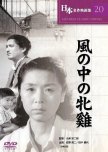
This review may contain spoilers
"What would you do?"
A Hen in the Wind was a difficult film to sit through. The film was set in occupied post WWII Japan when it was recovering from the damaging effects financially and emotionally from the war. In the homes, marriages had been tested as women struggled to maintain households with the men away for years. Ozu veered into melodrama and physical violence with one such marriage, something he did not often do, and which was troubling for these 21st century eyes.Tokiko and her son are expectantly waiting for her husband to be repatriated after the war. She's sold nearly everything she had and is almost penniless. Her friend is also short on cash but helps her when she can. After selling her last kimono Tokiko has enough money to eat for awhile longer when disaster hits. Her son becomes dangerously ill and the hospital requires a cash payment up front for his life saving treatment. With no one else to turn to for such a large sum of money she sells herself for one night to save her child's life. After her husband comes home, she is unable to lie and tells him what she had done. Far from being grateful for saving his son's life, Shuichi becomes livid and interrogates her. He visits the brothel in order to find out if she had been a regular there. He meets a 21-year-old girl and sympathizes with her reason for having to prostitute herself and vows to find her employment. His boss agrees to hire her, but points out to Shuichi that hypocritically he had no problem forgiving and understanding a stranger but could not do so for his own wife. Shuichi acknowledges his wife had no choice. He just can't seem to let go of his anger. Later that night when Tokiko begs him to stay home, he "accidentally" pushes her down a tall flight of stairs. The "accident" seems to knock some sense into him and he tells Tokiko they need to forget the past, embrace, trust each other from here on out and live as they were supposed to.
The level of intimate violence in this film disturbed me greatly. It was heavily implied that Shuichi raped Tokiko. The poor woman had been victimized twice. Once by crushing poverty and a heartless medical system and a second time by her spouse. Shuichi manhandles her on several occasions, one of which causes her fall. The fall was filmed to show just how brutally her body slammed against the stairs over and over. Shuichi could not even be bothered to help her as she finally dragged her limping body back up to their room. When he declared that their estrangement was over and they would both forget what had happened it was hard to take him seriously. Nowhere in his self-righteous monologue did he tell her he was sorry for his behavior and make sure she was okay. Perhaps Ozu was using the marriage as a metaphor for Japan showing after its disgrace, it could all be put behind them in order to face a brighter future. Whatever the reason, it has been a long time since I've despised a character as much as I have Shuichi. He had every right to be taken aback and troubled, but his utter lack of empathy and physical rage toward Tokiko was disconcerting as he played the victim.
Ozu, as other directors had done, asked the question, "What would you do?" During times of financial crisis especially when a life is on the line, what would a person do? In this case a mother was willing to shame herself in order to save her child's life. It's easy to judge when money is available, but when it's not and there are few options, people will do what they must to survive and for their children to survive. And in this instance Tokiko was still the same truthful person she'd always been with her husband and told him what she'd done.
Even if I hadn't known this was a film by Ozu I would have recognized his work. The repeated use of architectural shots, especially of the gas storage units next to the slums where Tokiko lived were a dead giveaway as well as the precisely organized and decorated rooms the camera lingered over. He also showed the rusted-out remnants of sewer pipes several times usually in conjunction with Shuichi. I don't know what his meaning behind the sewer pipes meant, but I know how I viewed them in regards to the husband with the hurt male pride. If their marriage had been contaminated it was not by coerced infidelity but a cruel world that would let a child die and a husband who could not understand the cost to his wife. I found it interesting that the brothel was neater and cleaner looking than the heartless hospital. Finally, Ozu was already doing the directing style of actors looking straight into the camera to talk. This was his one technique that often disengaged me from the story because it didn't feel natural or intimate, more like breaking the fourth wall.
What I did find of great value in this film was Tanaka Kinuyo's emotionally honest performance. She conveyed a plethora of emotions that all rang true. Her devastated face and torn dress told you all you needed to know in one scene. Regardless of the situation, Tanaka gave her character great depth even when you might not agree with her actions. It rendered Shuichi's actions unforgiveable because Tanaka conveyed Tokiko's suffering so well that it made you wonder how anyone could not want to comfort her. In fact, it was the women of this film who tied it together. They had no choice but to keep moving and doing what they must without falling into despair. They were the ones who stood by each other, shared, and even as they joked about rising prices and rations gave the impression that hope was on the horizon.
If you can set aside the marital violence, which can be a tough assignment, A Hen in the Wind asked pertinent questions. The film also gave a glimpse into Japan's post war trauma in a way only Ozu could. Despite the destruction and shame, the resilience of the people, like in Tokiko's marriage would rise up and make a better day putting the past behind them and face the future with honor and courage.
6/21/23
Was this review helpful to you?

 54
54 188
188 11
11






















